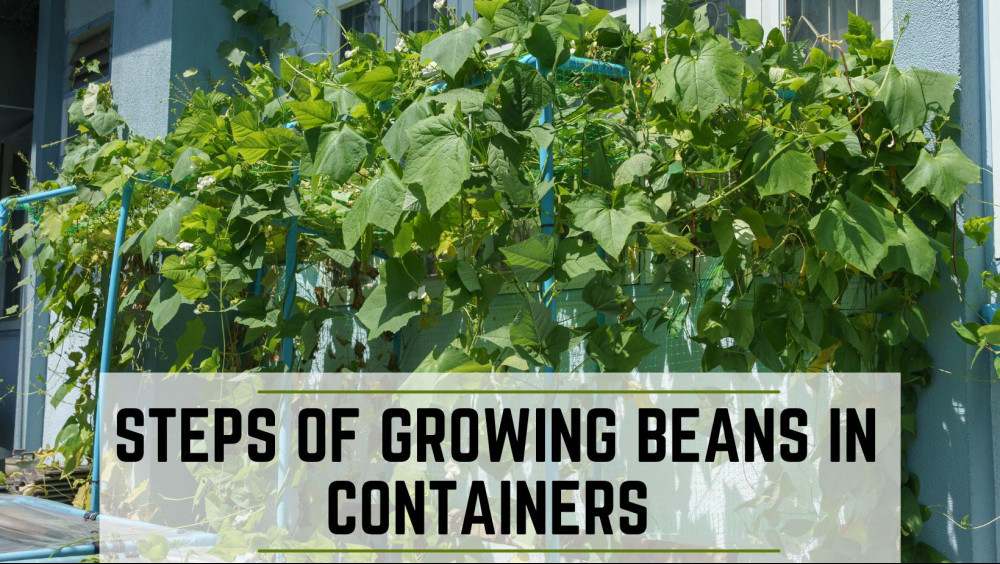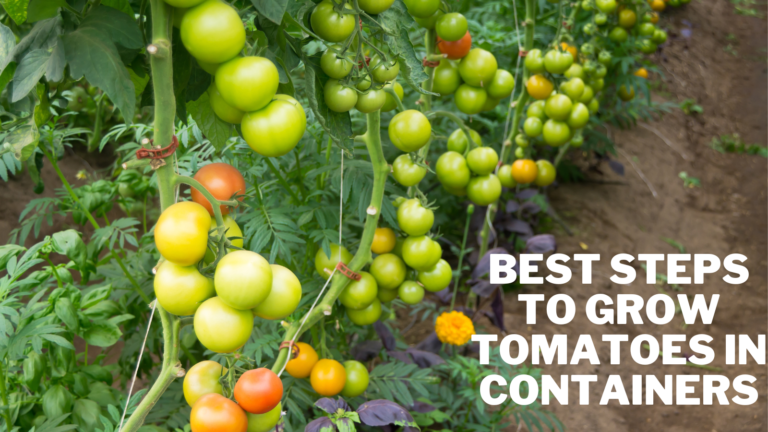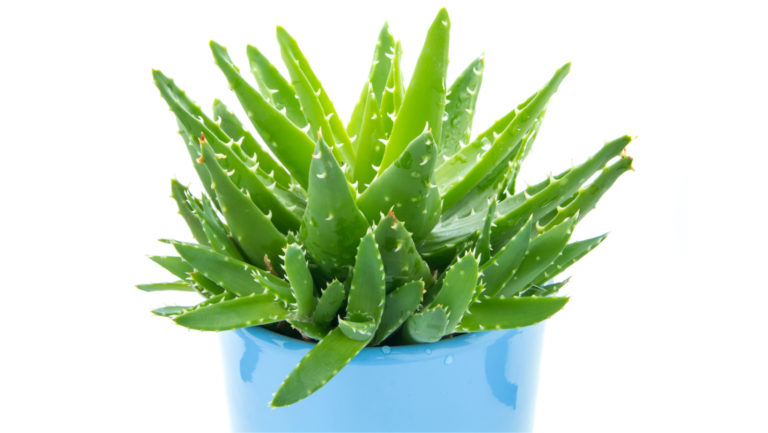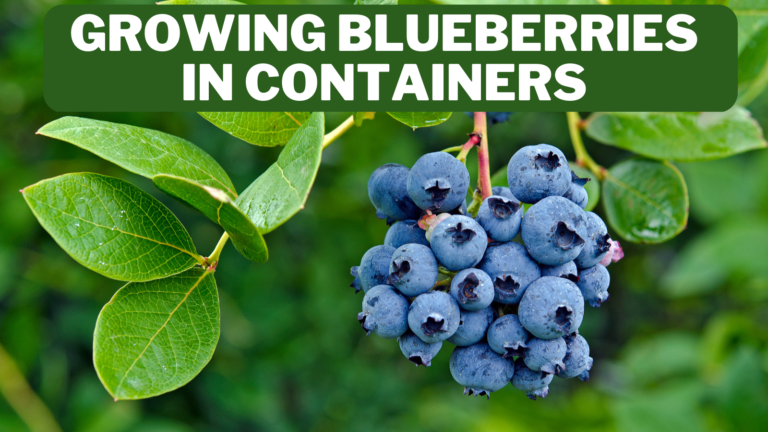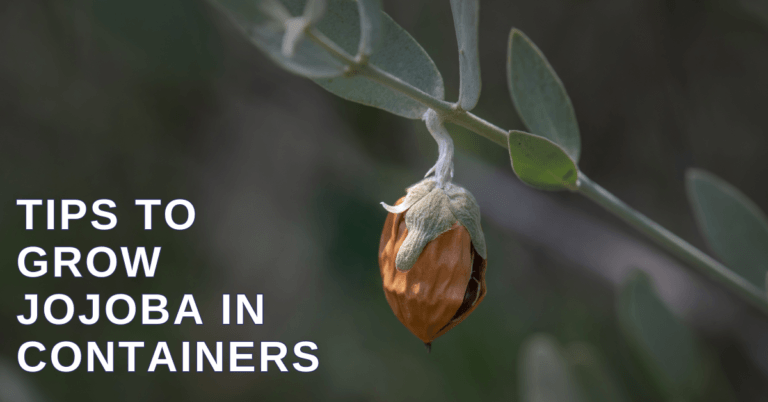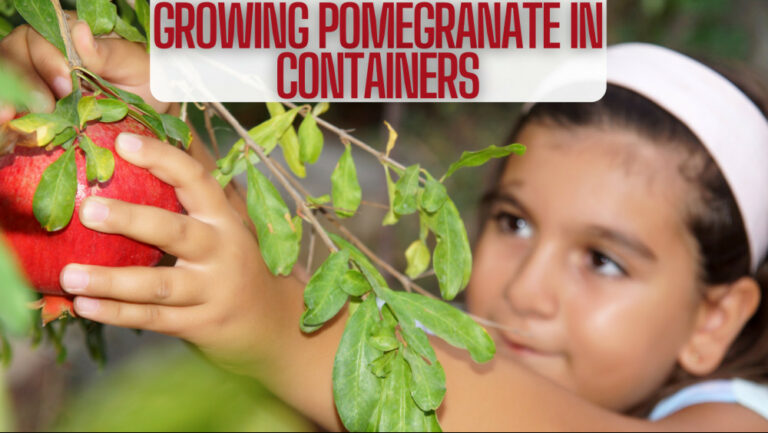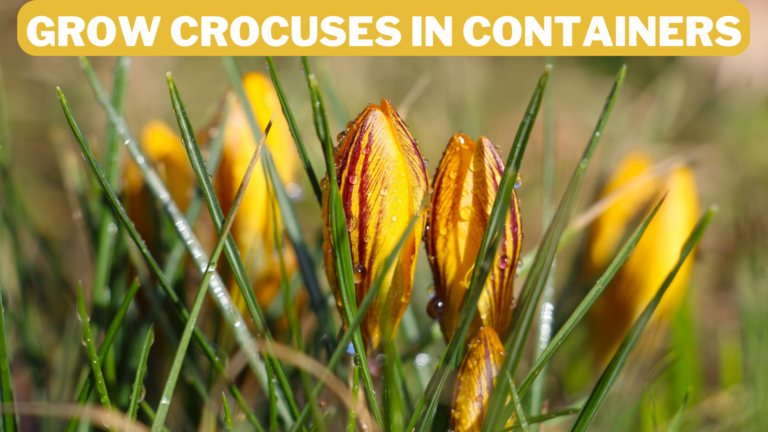7 Best Steps Of Growing Beans In Containers
7 Best Steps Of Growing Beans In Containers
The edible plant seeds or seed pods of several Legume family members (Fabaceae, formerly Leguminosae) or the different leguminous trees and shrubs that produce these seeds or pods are called beans. Bean plants are among the earliest plants humans grew in the Old and New Worlds.
They have long been and will continue to be a vital source of human protein, vitamins, and other nutrients.
Bean consumption has risen in recent years, owing primarily to economic improvement in India, which has a large vegetarian population, and greater use in industrialized countries as people shift to better diets.
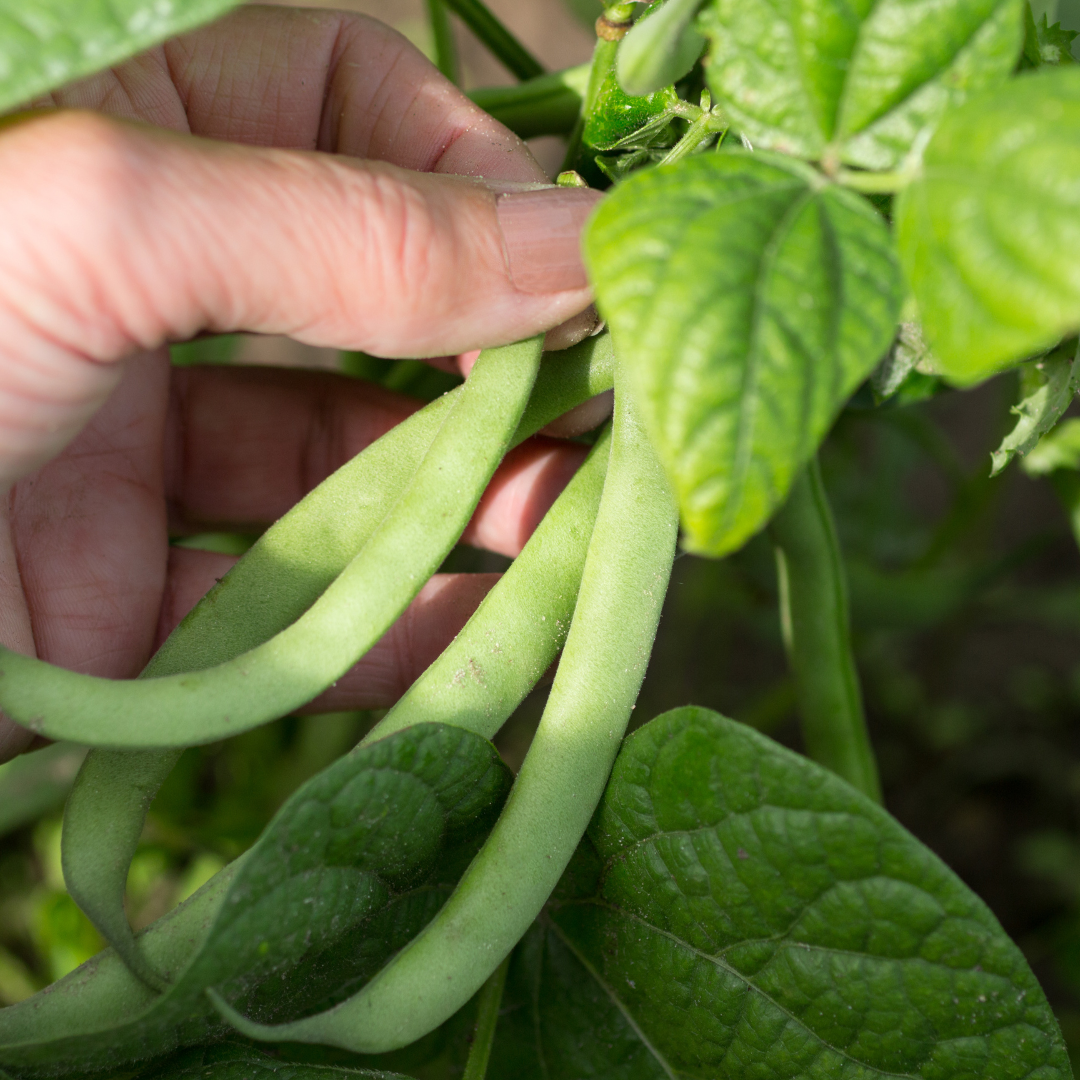
History & Origin Of Beans
Before growing beans in containers, I’m sharing the beans' origin. We use the term “bean” to refer to many plants in the Leguminosae family. We also use the same phrase to refer to the seeds of plants that we eat.
At first, only the fava or broad bean was called a bean. Still, over time, other plants such as the common bean and the runner bean, as well as soybeans, peas, chickpeas, vetches, and lupins, and even seed from plants that are almost nothing like beans, such as coffee beans, castor beans, and cocoa beans (but they will not be the focus of this text), were given the name “bean.”
The world's oldest common bean cultivar was discovered in Peru around 8,000 years ago. Lima beans (P. lunatus) were probably domesticated around Lima, Peru, about 5,300 years ago.
Runner beans (P. coccineus) were domesticated in Mexico 2,200 years ago, and tepary beans were domesticated in Mexico 2,200 years ago (P. acutifolius).
The tepary bean has been farmed for about 5,000 years in the Sonoran Desert of northern Mexico and the southwestern United States, where it is still a food staple, according to Native Seeds/SEARCH.
Nutrition Facts About Beans
Thousands of years have passed since beans were first planted. They're now a major food source throughout the planet.
Black, kidney, navy, fava, and pinto beans are common in the United States. The nutritional characteristics of different beans vary.
For instance, 1 cup (171 grams) of boiling pinto beans provides:
- Protein: 15 grams
- Fat: 1 gram
- Carbs: 45 grams
- Fibre: 15 grams
- Iron: 20% of the Daily Value (DV)
- Calcium: 8% of the DV
- Magnesium: 21% of the DV
- Phosphorous: 25% of the DV
- Potassium: 21% of the DV
- Folate: 74% of the DV
Best Types Of Beans For Container Gardening
Before growing beans in containers, you need proper knowledge of all types of beans. They come in a wide range of kinds, with over 400 varieties.
And that's just what we're aware of as being edible. The best thing about beans is that even the most amateur chef can make them into a lovely supper.
Beans may be used to make dishes that require only rudimentary cooking abilities.
Green beans are classified into TWO categories:
- Pole beans and
- Bush beans.
However, we separated the Bean Types into FIVE categories in this article:
- Shell beans.
- Pole beans,
- Runner Beans,
- Lima Beans
- Bush beans,
You'll find the names of some popular and easy-to-grow green bean varieties that may be grown both in the regular garden and in containers.
1. Shell Beans
Unlike green beans, shell beans are shelled for the seeds and eaten without the pods. Dried beans have the same nutritional content as fresh beans, and they are picked when both the pod and the seeds inside have dried.
1.1 French Horticultural Beans
It's a hardy, productive plant resistant to various illnesses. The purple seeds inside the pods can grow 6-8 inches long. If you want it shelled, you must wait 90 days before harvesting.
1.2 Black Turtle Beans
This variety's petite, gleaming black beans appear so strange that they make you think twice about preparing them.
1.3 Vermont Cranberry Beans
This variety's maroon speckled beans are oval, with a great taste and high quality. Each pod contains 5 to 6 seeds. It takes 60 days to get a fresh shell bean and 85 days to get a dry bean.
1.4 Navy Beans
What is the significance of this name? Because in the twentieth century, this bean was a staple diet for the US army. The beans are creamy-white and grow inside a 4-inch pod.
2. Pole Beans
Pole beans are climbing beans that require the support of a structure or pole to climb. Pole beans have the advantage of producing a bigger output vertically than bush beans, and you can easily grow them in pots if you're prepared to give adequate support.
2.1 Blue Lake Beans
This variety's sweet, stringless, and soft beans delight the palate. Stringless, oval, and dark green beans are present in the pods, which are 5-7 inches long.
You can eat them fresh, frozen, canned, or baked, depending on your preferences. In 62-75 days, the beans will be ready to harvest.
2.2 Emerite Pole Beans
This pole bean, which reaches a height of roughly 8 feet, produces sweet and earthy taste beans. It's a real filet with straight and narrow pods that hails from Vilmorin.
When the sensitive beans are young, roughly 4-5 inches long, you can eat them. Alternatively, for crispy and brittle beans, pick them when they are 7-9 inches long. Between 55 and 70 days are required for harvesting.
2.3 Asian Winged Beans
This plant produces bean pods with winged edges, as the name implies. They look amazing and taste wonderful because of their unusual appearance.
From the roots to the foliage, the entire plant is edible. Place it in a warm, humid location for optimal growth; you can also use a humidifier.
2.4 Rattlesnake Pole Beans
This bean is not as terrifying as its name suggests! Its pods are a unique shade of dark green with purple streaks.
It tolerates sandy soil and is drought-tolerant. If you select the 8 to 10-inch long pods every 2-3 days, they will grow throughout the season. Its rich, sweet flavour goes well in soups and stews.
2.5 Roman Beans
This bean is well-known in Europe and is frequently used in Italian cuisine. The flavour is unrivalled and best while the pods are young, so pick them as soon as they reach 5-6 inches in length. The pole bean takes 60-70 days to reach that stage.
2.6. Fortex Beans
If given the opportunity, the pods can develop to reach 11 inches long or even longer. If you prefer slim filet beans, you can harvest them when they reach 7 inches in length.
3. Runner Beans
In North America, runner beans are planted for their brilliant blossoms, but they're a popular delicacy in the United Kingdom. Depending on the variety, runner beans can be bush or pole kind.
They'll attract pollinators to your vegetable garden and can be grown with other colourful veggies for edible landscaping.
3.1 Scarlet Runner Beans
This ten-foot-long vine is recognized for its beautiful scarlet blossoms, speckled burgundy and black seeds, and excellent green beans.
3.2 Dragon’s Tongue Bush Beans
This heirloom bush bean variety produces beans after 60 days. It's noted for its delicious flavour and distinctive yellow pods with purple streaks.
3.3 Moonlight Beans
It’s a self-pollinating variety, so you won’t be required to cross-pollinate if pollinators are unavailable.
3.4 Hestia Dwarf Runner Beans
In 60 to 70 days, this dwarf runner bean type grows to a height of 16 to 18 inches and delivers an adequate output of excellent, slender, 8-inch-long beans.
4. Lima Beans
It's a Central American warm-season crop with protein and other nutrients like thiamine, iron, and riboflavin.
Lima beans are well-known for their flavour and antioxidant content, and integrating them into one's diet has numerous health benefits.
4.1 Henderson’s Bush Beans
The bushy, upright plant provides buttery taste beans and is sturdy and healthy. Peter Henderson & Co. introduced it in 1888, which is still popular today.
4.2 Fordhook 242 Bush Beans
This bean has a nutty flavour and is wonderful. It can withstand drought, heat, and other harsh circumstances. The thick, greenish-white pods are 3-4 inches long.
4.3 Dixie Butterpea White Beans
The plant can grow 16 to 23 inches tall, with pods measuring 3 to 4 inches long. With roughly 3-4 spherical seeds in each pod, the beans have a succulent-like texture and a meaty flavour.
4.4 King Of The Garden Vine Beans
The vines can grow up to ten feet tall but can be cut back. The beans take a long time to mature, roughly 85 to 90 days, but they are exceptional.
5. Bush Beans
Do you find the process of erecting a support structure to be too time-consuming? Then bush beans are the way to go because they grow erect and don't require any support because they're a freestanding plant.
They may be planted in practically any place. Although pole beans can be grown in containers, bush beans are better suited to container gardening. You can also reduce the time it takes to harvest bush beans.
5.1 Blue Lake 274 Beans
The plant is tiny, standing between 12 and 22 inches tall. It's ideal for canning and freezing because the beans develop simultaneously.
With a harvest time of roughly 60 days, this variety produces a large yield and is one of the beans we couldn't leave out.
5.2 Contender Beans
These can be eaten raw in salads or cooked for a wonderful and nutritious dinner. In 40-55 days, the pods will be ready to harvest.
This type resists various diseases, pests, heat, and mildew. The high-yielding pods have a curved shape, are spherical, and are 6-8 inches long.
5.3 Bountiful Bush Beans
Bean beetles, rust, and mildew resistance are all included in this bush bean type. The pods are stringless and can be harvested in 49 days.
The beans can be stored and used later by freezing or canning them. Both the foliage and the pods are light green, with pods reaching around 6 inches.
5.4 Derby Beans
When the beans are picked young and soft, the flavour is exceptional. Dark green oval and rounded pods can reach a length of 7 inches.
It can withstand various climatic conditions and matures in 57 days. The beans are freezer and canning-friendly!
5.5 Kentucky Wonder Bush Beans
It's a fast-growing variety that goes by the names Commodore and Old Homestead. The pods are meaty and sensitive, taking anywhere from 52 to 65 days before harvest. They can be grown in nearly any climate since they are so adaptable.
5.6 Provider Beans
It germinates in chilly soil and, once planted, is weather tolerant. Not only that, but it's disease-resistant as well. The beans will be ready to pick them in 48-54 days.
Steps Of Growing Beans In Containers
There are a few things you can do to ensure success with any beans you choose to cultivate. Here are seven techniques for growing beans in containers.
1. Select The Ideal Location For Growing Beans
Beans require a lot of sunlight to produce them efficiently. Choose a location that receives at least eight hours of sunlight per day.
If a spot this sunny is difficult to come by, seek a shade-tolerant pole bean type. Even with only six hours of sunlight every day, these will thrive.
Other elements to consider while determining where to plant your bean container garden include wind and heat.
Pole beans grow to be rather tall and prone to being blown over. It is critical to select a location that is well-protected from wind gusts.
Warmth is required for all bean kinds to germinate. Placing pots against south-facing walls can help the soil temperature rise while the seeds germinate.
Moving the pots to a slightly cooler but similarly sunny place once the sprouts have matured and the weather heats up will help minimize withering.
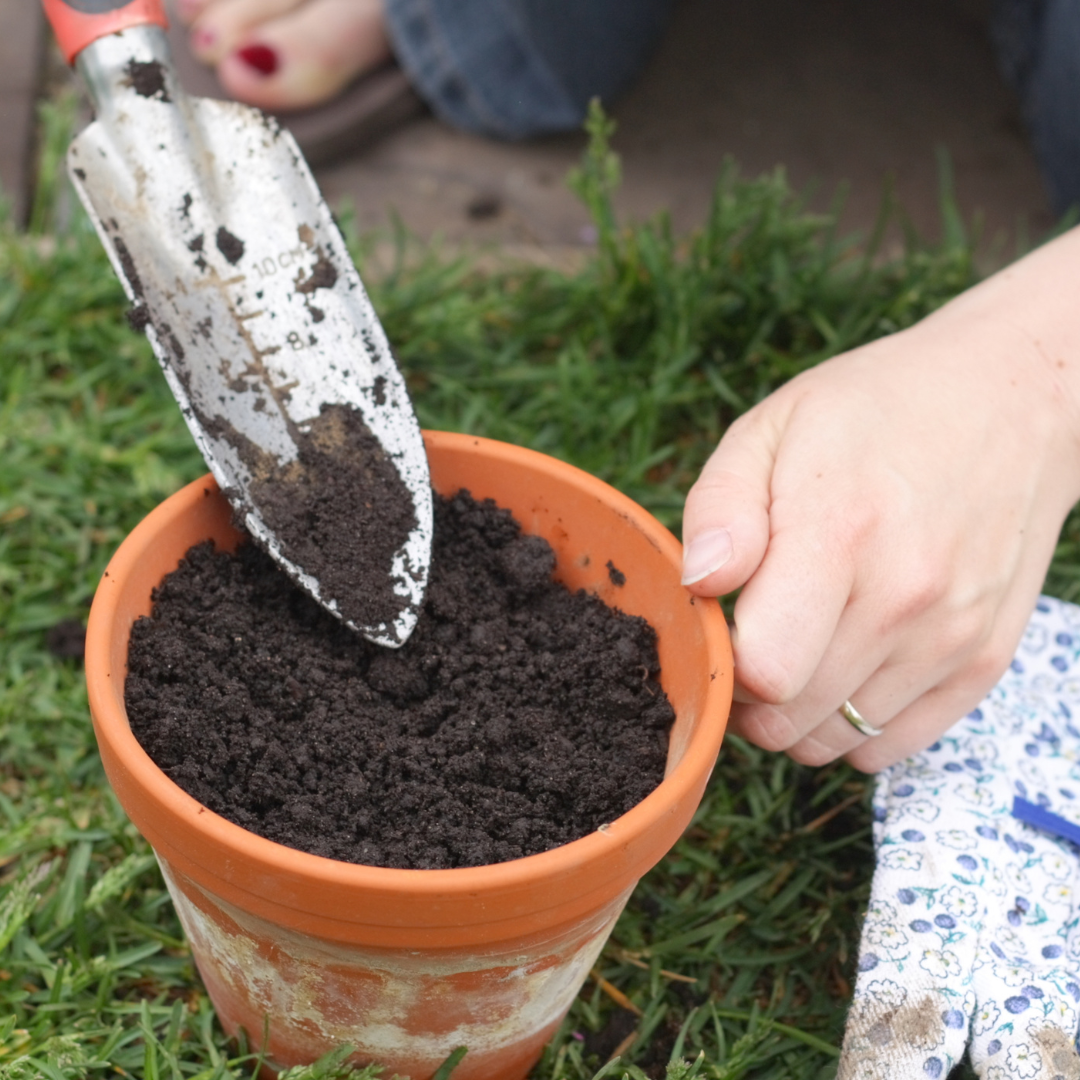
2. Get The Soil Ready For Growing Beans
You must be aware of the right soil for growing beans in containers. Beans aren't fussy about the soil they grow in.
They fix their nitrogen, like all legumes, and are better equipped to flourish in low-nutrient environments than other plants.
Still, starting the season with clean, fresh potting soil is a good idea to maximize your harvest and make caring for your plants easier.
Potting soil, unlike regular garden soil, contains vermiculite or perlite. Both compounds are excellent at preserving moisture and limiting nutrient release.
These characteristics are significant in pots because the small volume puts the soil at risk of drying out and losing nutrients.

3. Select The Proper Pot For Growing Beans
Beans have short roots compared to many other vegetables. Therefore, they can be grown in smaller containers.
Bush beans only require pots approximately 6 inches deep, whereas pole beans require pots closer to 9 inches deep.
Because pole beans grow so tall, using a heavy, wide pot that won't blow over is critical. Pots can also be secured next to deck rails to keep them from blowing about.
Cultivating more than one bean plant in larger pots—those ten inches wide and at least ten inches deep is possible.
Bush beans require a little more space between plants, at least 6 inches, but pole beans only require approximately 4 inches.
The drainage is just as critical as the pot size. Make sure there are at least three drainage holes in your pot. Beans want moist soil but don't enjoy it when it's too wet.
4. Sow Bean Seeds As The Weather Warms
Beans are warm-season plants, which means they must germinate in warm soil. They're also less resistant to frost and cold than other legumes like snap peas.
When growing beans in pots, you have a few choices for how and when to sow your bean seeds.
Bring your pots indoors to sow your seeds to lengthen your season, which is vital if you have short summers.
Place them in a warm location and let the earth warm up before planting. Move your adult seedlings outside into a warm area once the weather has warmed up and the threat of frost has passed.
Another alternative is to wait until the average outdoor temperature exceeds 60 degrees Fahrenheit.
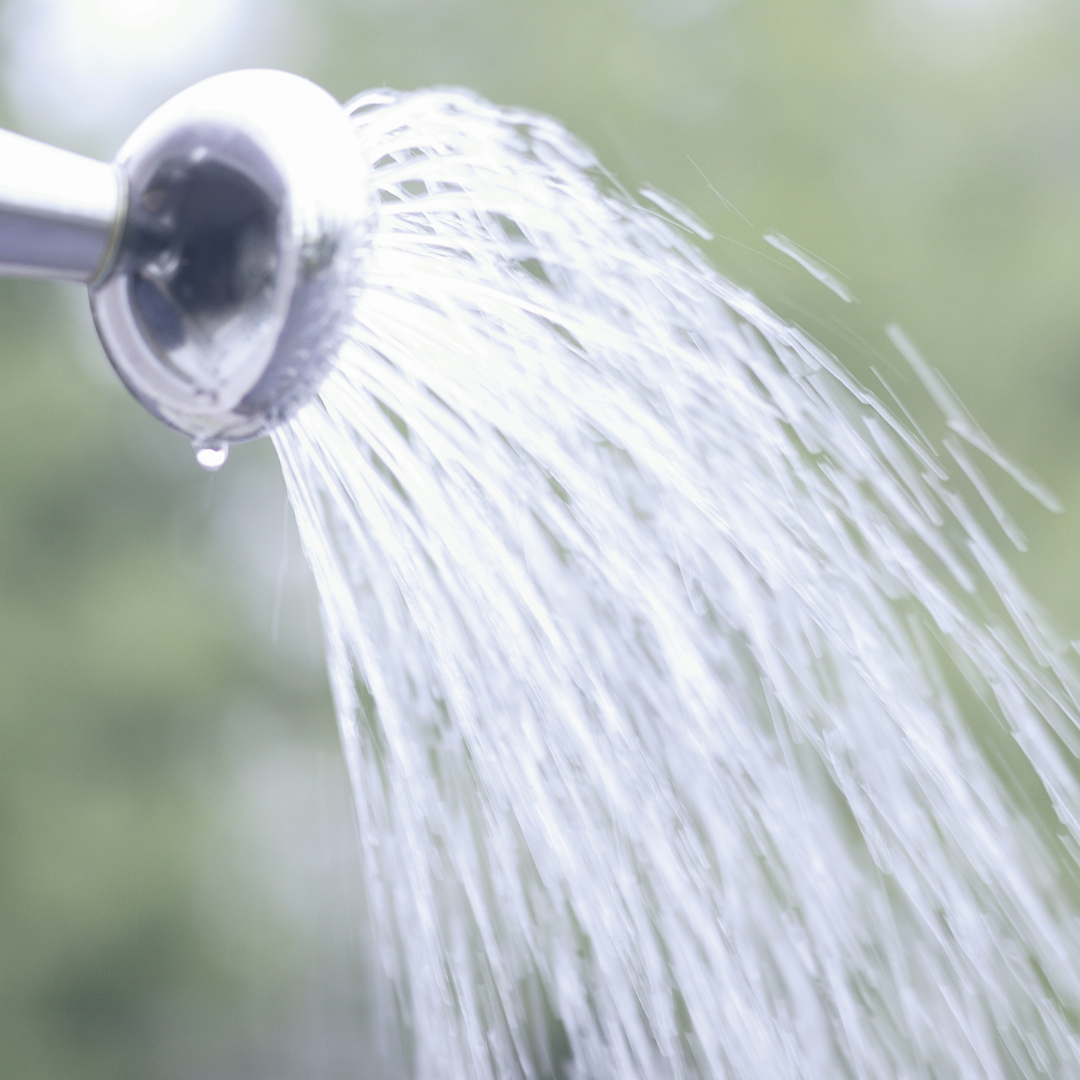
5. Water Bean Plants Regularly And Feed Monthly
Watering regularly is critical for the best yield. Push your finger inside the pot every day to check the dirt.
When the top inch or two of soil seems dry to the touch, water it. You shouldn't worry about over-watering your pots if they drain well. It's especially vital to keep the soil moist after the plants are flowering.
The plants will shed blossoms if they become too dry. Beans will benefit from a monthly application of liquid or granular fertilizer in terms of fertilizer.
Because beans can fix their nitrogen and too much of this nutrient can impair pod output, look for a product with a lower nitrogen concentration.
6. Take Care Of Your Bean Plants As Needed
Beans are relatively simple to care for and do not require much attention. You'll need to give a lattice or support for climbing pole beans if you're growing them.
Although they usually climb independently, keeping an eye on them and training the vines as needed is still a good idea.
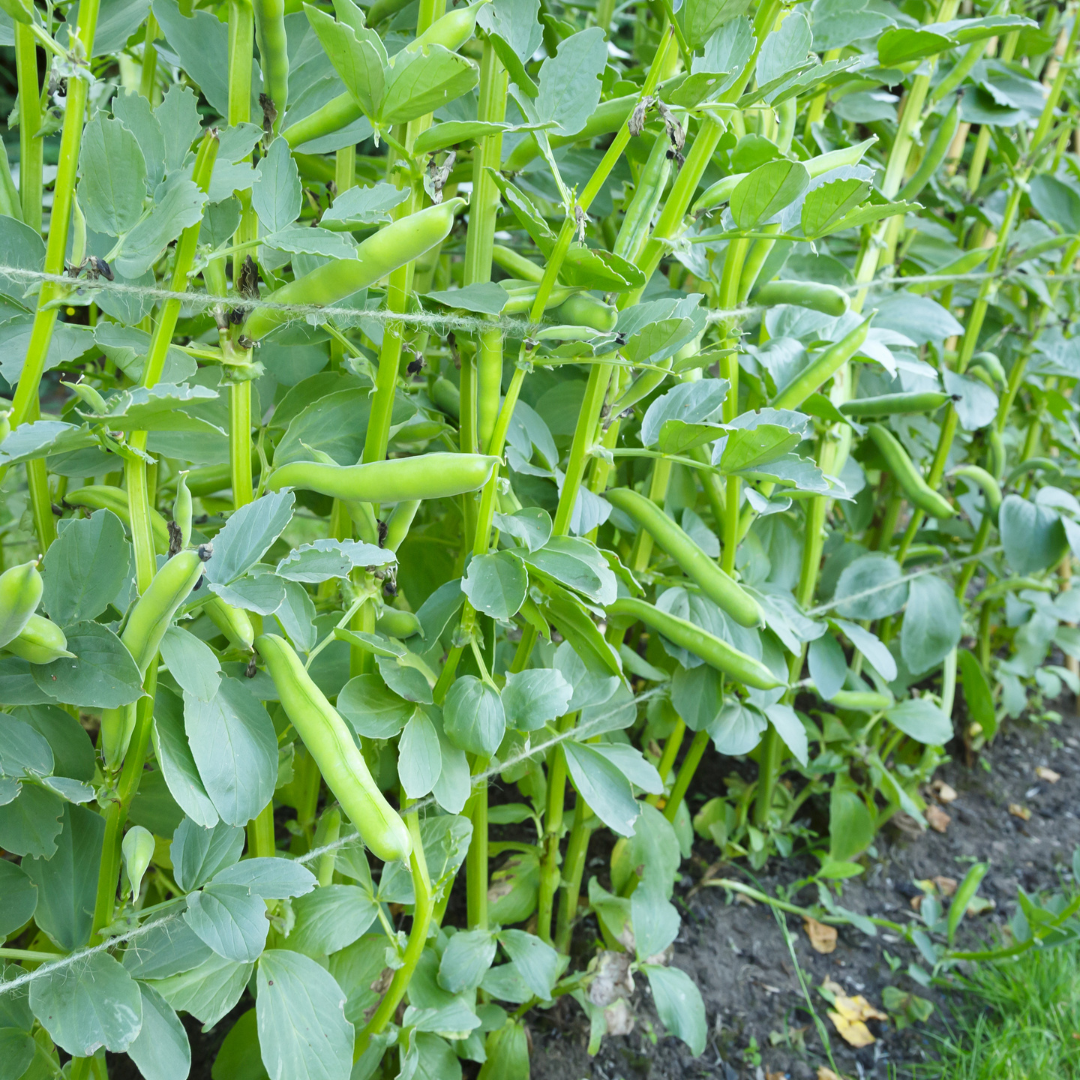
7. Harvesting Beans
Bush beans produce their bounty all at once, and the harvesting period is usually only two weeks long.
On the other hand, some cultivars may yield for a month or longer, especially if mature pods are plucked regularly.
On the other hand, some cultivars may yield for a month or longer, especially if mature pods are routinely plucked.
Throughout the growing season, pole beans will continue to yield. By harvesting pods as soon as they reach full size, you can encourage more prolific production. When the beans reach about four inches long, they are ready to be picked.
However, because there are so many distinct types, some smaller and some larger, read your seed packet for particular instructions.
Harvest regularly until the plant stops producing blossoms or the weather cools. Bean plants will perish as the first frost arrives.
If your plants are still producing when the weather changes, bring them inside and put them in a bright, south-facing window to extend the season.
8. Pests & Diseases Of Beans
Bush beans, in particular, are a challenging crop. However, a few pests and illnesses feed on these legumes, and you should know that before starting your bean container garden.
1. Bean Common Mosaic Virus
This virus infects legumes and generates a characteristic yellow-mottled pattern on leaves, stunting plant growth.
This virus is usually present in the infected seed, although pests can also spread it. The easiest approach to avoid problems is to buy your seeds from a reliable source and set up your container garden away from other foliage.
2. Pests
The most frequent pests that attack legumes are aphids and bean leaf beetles. They harm the leaves, which might result in reduced growth and decreased pod output.
Bean beetles will consume the bean pods as well. If you see little yellow bugs or black and yellow beetles on your plants, wash them with soapy water to kill them.
3. Bean Rust
This fungal illness can swiftly deplete the productivity of your bean plants. Look for white or yellow dots on the leaves that develop into red or brown bumps with yellow rings.
As soon as you notice diseased leaves, cut them off. Providing enough space and airflow between plants will lessen the chances of your plants being harmed.
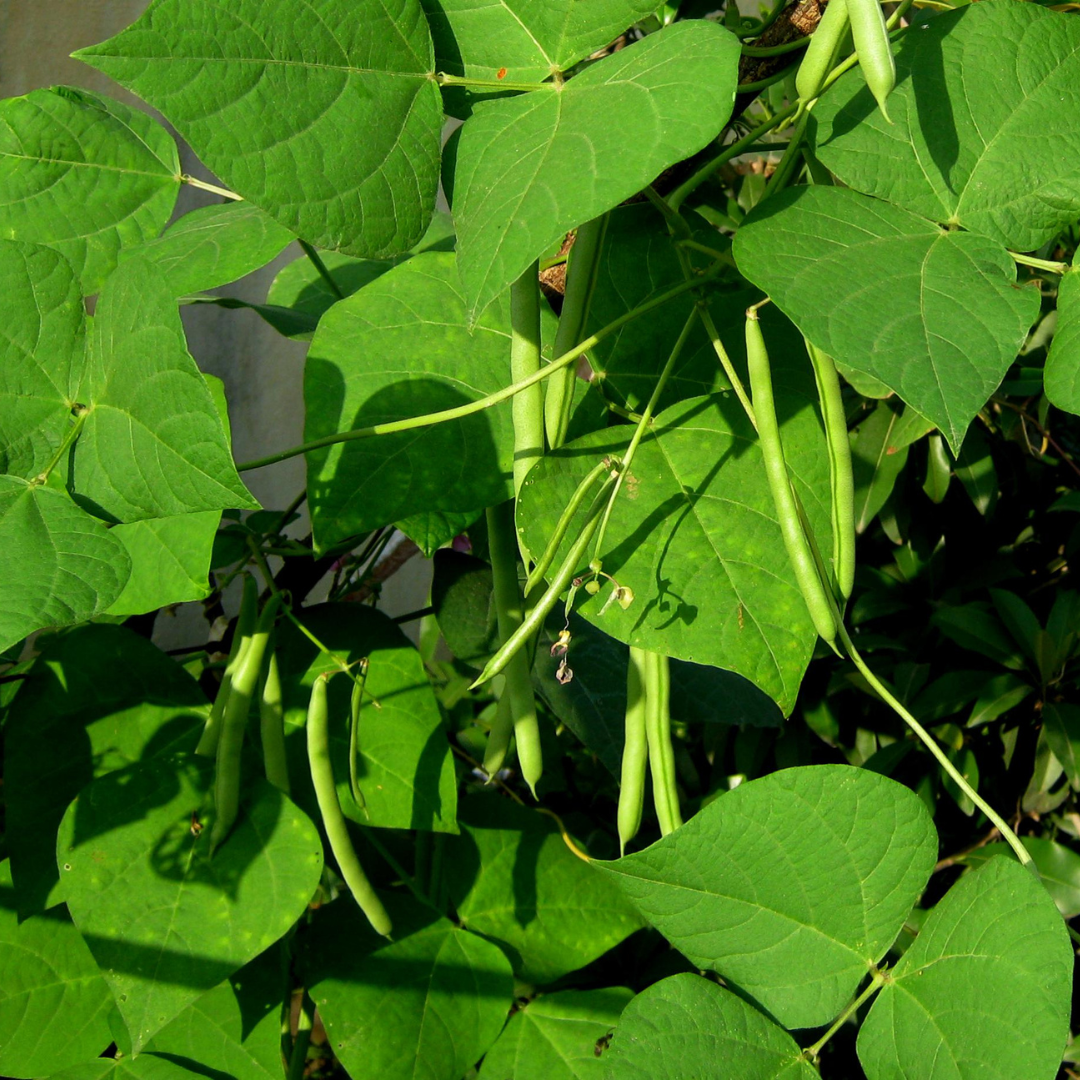
Conclusion
Beans are a low-maintenance vegetable that requires little attention after establishing themselves.
Keep a watch out for slugs and, if necessary, take action. Mexican bean beetles, which look like ladybugs as adults, are another frequent bean pest.
They have sixteen black spots on their backs and are orange-red. Yellow is the colour of their eggs and larval stages.
Use row coverings and handpick to avoid harm and eliminate any that you find. Because beans are prone to fungal illnesses, avoiding the bean patch when it's raining is best.
If there hasn't been any rain, water once a week, and pay special attention to irrigation when the plants are flowering and producing pods.
Also, water early in the day to allow the leaves to dry before nightfall. Mulch your plants with straw or shredded leaves to keep the soil moist and weeds at bay.
I trust you enjoyed this article on the 7 Steps Of Growing Beans In Containers. Please stay tuned for more blog posts to come shortly. Take care!
JeannetteZ
>>>Please click here to read my all-inclusive article about Container Gardening<<<
Are you interested in homegrown herbs and medicine? Please click here to find out more about it!
Your Opinion Is Important To Me
Thoughts? Ideas? Questions? I would love to hear from you. Please leave me your questions, experience, and remarks about this article on the 7 Steps Of Growing Beans In Containers in the comments section below. You can also reach me by email at Jeannette@Close-To-Nature.org.
Disclosure
This post may contain affiliate links. I earn from qualifying purchases as an Amazon Associate and other affiliate programs. Please read my full affiliate disclosure.
You might also enjoy these blog posts:
10 Easy Steps Of Growing Cucumbers In Containers
Find The Best Fruit For Container Gardening
12 Best Flowers To Grow In Your Container Garden
8 Easy Steps Of How To Grow Beets In Containers
9 Easy Steps To Grow Roses In Containers

